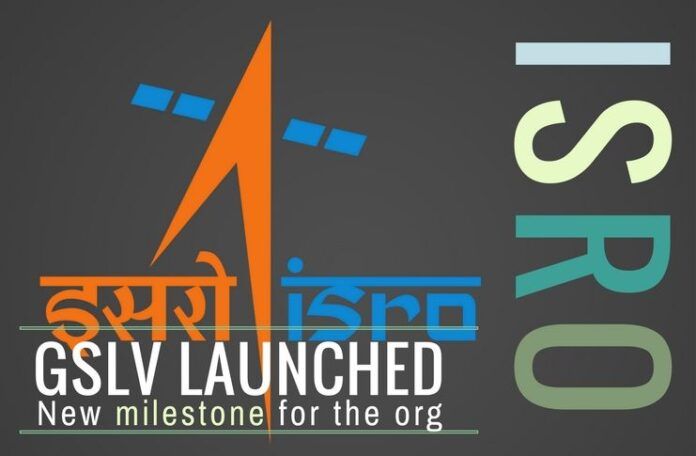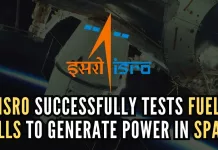
[dropcap color=”#008040″ boxed=”yes” boxed_radius=”8px” class=”” id=””]W[/dropcap]ith the successful launch on Thursday of a heavy duty Geosynchronous Satellite Launch Vehicle (GSLV) which was powered by an indigenously developed cryogenic engine), scientists of Indian Space Research Organisation (ISRO) told the world that they are capable of deploying heavy communication and remote sensing satellite into space from Indian soil itself..
This was the first operational flight of the GSLV with the indigenous cryogenic engine built by the scientists and engineers of the ISRO.
While proving the efficacy of the indigenously developed cryogenic engine, a prerequisite for launching satellites weighing two tonnes or more, the Indian Space Research Organization (ISRO) engineers successfully deployed an advanced weather satellite which weighs 2211 kg into an orbit of 36000 km from earth. The mission named GSLV F05 lifted off from the second launch pad at Satish Dhawan Space Centre at Sriharikota, India’s gateway to the skies, at 4.50 pm local time. Though the scheduled time of launch was 4.10 pm, the delay of 40 minutes was necessitated by a technical snag which was rectified instantly.
This was the first operational flight of the GSLV with the indigenous cryogenic engine built by the scientists and engineers of the ISRO. Till now India was dependent on space agencies like the European Space Agency for commercial launches of its heavy communication satellites.
The ESA, according to sources in ISRO, used to charge Rs 500 million to deploy a 3.5 tonne communication satellite into the geo synchronous orbit which is 36000 km away from the earth. This is in addition to the cost of the satellite incurred by the ISRO.
[dropcap color=”#008040″ boxed=”yes” boxed_radius=”8px” class=”” id=””]T[/dropcap]he cryogenic engine technology had been denied to India by a cartel led by the USA under the pretext of Missile Technology Control Regime. Space agencies like the ESA and NASA had a monopoly over the global launch market worth thousands of billions dollars per year and they fear that India may eat into their launch business if it perfected the cryogenic technology.
The INSAT-3DR, the advanced weather satellite deployed by the GSLV 05 mission on Thursday is the heaviest ever satellite to be launched from Indian soil. This is the tenth GSLV mission to be launched by ISRO. But six out of the ten missions were powered with Russian built cryogenic engines. While most of the missions were only partially successful, ISRO saw four of its past missions ending up in failures.
Thursday’s mission was announcement to the global community that Indian space engineers were ready to launch heavy communication and remote sensing satellites.
The GSLV F05 had a height of 49.1 metre and weighed 415.2 tonne at the time of lift off. The uniqueness of the mission is that the satellite INST-3DR is the heaviest ever satellite ever launched from Indian soil.
With the success of the last three GSLV launches, India cam claim that the country has perfected the capability to launch heavy remote sensing and communication satellites. “The GSLV-F05 performed exceedingly well and it put the satellite into the perfect orbit,” said Kiran Kumar, chairman, ISRO after the successful deployment of the satellite by the launch vehicle.The satellite is expected to provide a variety of meteorological services to India.
[dropcap color=”#008040″ boxed=”yes” boxed_radius=”8px” class=”” id=””]W[/dropcap]ith the success of the indigenously built cryogenic upper stage, the engine that powers the heavy Geosynchronous Satellite Launch Vehicle, Indian space engineers has brought down the cost of launching heavy satellites weighing more than two tonnes.
The ISRO’s order books are full for launching satellites…
N P Giri, vehicle director, GSLV F05, said after the launch that he had been told by the ISRO chairman to work out the rates for the commercial launches using the GSLV. This is an indication that space faring nations are knocking on the doors of the ISRO for the commercial launches of their heavy communication and remote sensing satellites.
K Sivan, director, Vikram Sarabhai Space Centre, the nerve centre of India’s launch vehicle development programme announced that ISRO would be ready with GSLV.Mark III, the dream machine capable of carrying satellites and spacecraft upto 5 tonnes into the GTO(36,000 km away) in three months.
India’s Polar Satellite Launch Vehicle (PSLV) has established its command and consistency in launching satellites up to 1000 km into low earth orbits. The ISRO’s order books are full for launching satellites into the List of Earth Observation (LEO).
[dropcap color=”#008040″ boxed=”yes” boxed_radius=”8px” class=”” id=””]T[/dropcap]he year 2016 turned out to be successful for ISRO as it launched two more regional navigation satellite to make the Indian Regional Navigation satellite System fully operational . The country’s space agency also successfully conducted two crucial tests on the reusable launch vehicle as well as the scramjet, two technologies which are expected to bring down the cost of access to space to an unbelievable rate.
- Supreme Court rejects plea to tally all VVPAT slips with EVM votes; says ‘no going back to paper ballot’ - April 26, 2024
- US report citing human rights violations is deeply biased: India - April 25, 2024
- Kotak Mahindra Bank shares tank 13%. Market Cap erodes by Rs.37,721 cr post-RBI action - April 25, 2024










